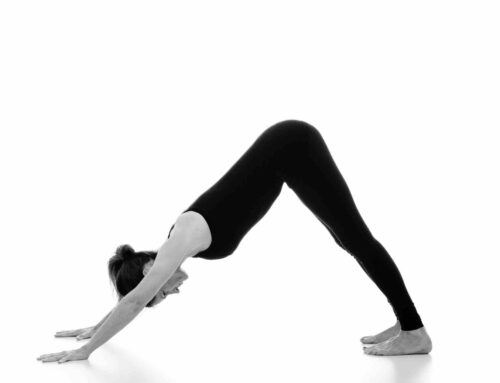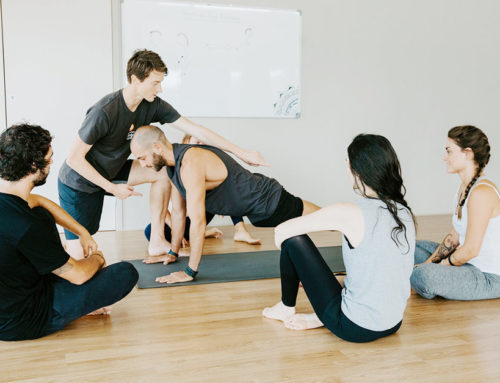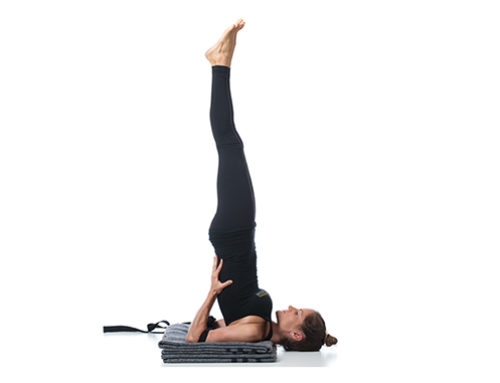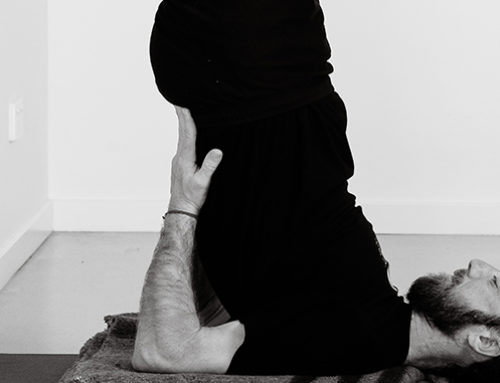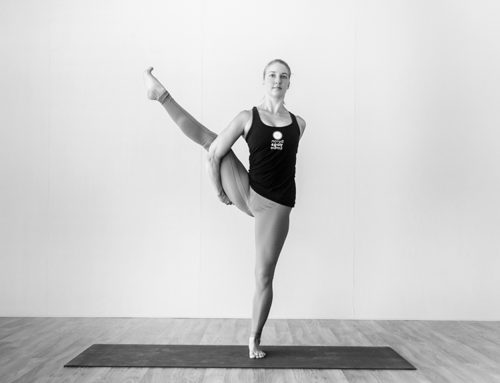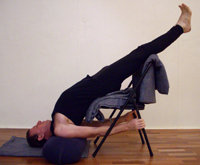
Being upside down can be confronting for some. Yet the benefits are many – combating hyperactivity, stimulating metabolism, increasing cardiovascular circulation and opening the heart. Salamba Sarvangasana, or Shoulderstand, is particularly effective for people with an overactive thyroid – symptoms which include excessive talking, an inability to focus or listen, stuttering, and physical hyperactivity. As John Ogilvie, senior teacher and founder of Byron Yoga Centre explains, adopting a supported shoulder stand using a chair helps us relax and surrender to its benefits.
Sanskrit
Salamba – supported
Sarvanga – whole body
Asana – physical posture
Benefits
The areas or systems of the body to benefit from this pose are cardiovascular, lymphatic, nerves, and endocrine. The head being lower than the heart draws more oxygenated blood to the brain, opening up the heart and lungs to create space for quiet introspection. The thyroid and parathyroid glands in the neck are stimulated, helping regulate the hormones.
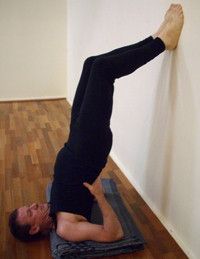
Shoulder extension is essential to helping open the chest so that the sternum can press against the lower jaw and this can press against the upper jaw. This creates traction in the neck, stabilising the neck and skull and exerting traction on the cervical vertebrae – the vertebrae of the upper spine. “You can feel your shoulder extension by standing in front of a mirror with your arms by your sides and rotating your shoulders by turning the palms outwards, thumbs away from the body,” says John. “Your chest lifts and your shoulders move back and down with the shoulder blades pinned against your back ribs. This is the position you want in Sarvangasana.”
The shoulders’ external rotators include the teres minor and the infraspinatus as well as the posterior part of the deltoid. The rhomboids, which pull the shoulder blades towards the spine, are another important set of muscles necessary to stabilise the pose. Setu Bandha Sarvangasana, Bridge pose, is excellent preparation for working your shoulder extension without the full weight of your body. Using a wall for support is another great aid in opening your shoulders.
Lie with your legs up the wall in Viparita Karani and then, using your heels as leverage, lift your hips. Keep your feet together and knees bent and work your posterior deltoid by bending your elbows 90 degrees while pressing your elbows firmly into the floor. This will allow you to lift your back ribs and bring your spine vertical. When you put your hands on your back ribs, keep your upper arms parallel; if your elbows go wide, you’ll be internally rotating and will lose your ability to press down and lift up.
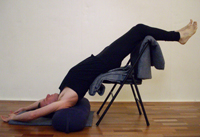
“Doing Salamba Sarvangasana using a chair is very different from the classic pose,” says John. “There are no bandhas
Set your chair with a blanket on the floor in front and another over its back. You can use folded blankets or a bolster on the floor in front of the chair, and either more blankets or a folded sticky mat on the chair to create more height. Sit side-saddle on the chair and swing your legs over the back of the chair. Hold onto the legs of the chair with your arms and adjust yourself until the tops of your shoulders are on the bolster or folded blankets on the floor and the neck has hardly any bend and is coming off the bolster. Your head should be straight, resting on the blanket on the floor, with your bottom on the chair. Once you are secure, you can bring your hands above your head, letting your elbows bend and your fingers move towards each other. “I like to hang out here gazing softly at my heart and letting my mind clear,” says John. “Some people may feel insecure that they may slip off the chair. Rather, they should feel supported and cocooned, and so totally relaxed.”
“This pose relates to the Vasuddha Charka, which governs our expression, the choices we make and our sense of truth,” says John. “It rinses away stuff about which we’ve been thinking and worrying. After 10 minutes in this pose, everything feels fine.”
